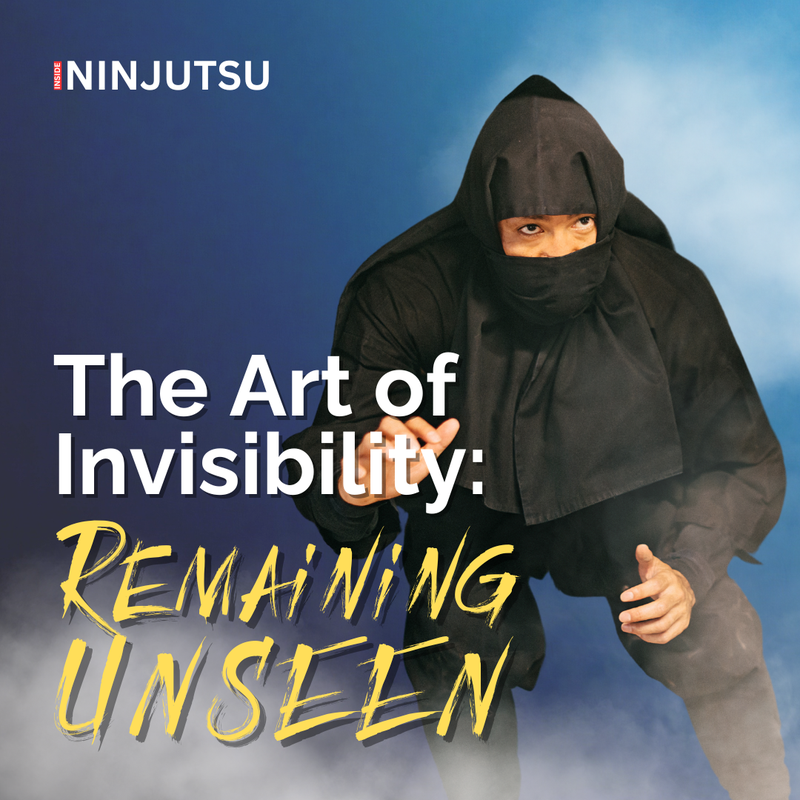
Reassessing the Ninja’s Water Spider
PUBLISHED 2 OCTOBER 2025
That Sinking Feeling
Few images are more striking in the popular imagination than the ninja gliding silently across a lake on strange floating devices. The mizu-gumo — often translated as “water spider” — is one of the most iconic of these so-called ninja tools. Described in the 17th-century Bansen shūkai (1676), sometimes referred to as the “ninja bible,” the mizu-gumo is usually depicted as a wooden float worn around the hips to keep a shinobi buoyant.
In theory, it was simple: a wooden seat or disk, sometimes paired with flippers, allowing the user to move across rivers and moats. In practice, however, things are far murkier.
Casting Doubt on the Water Spider
Rob Tuck, Associate Professor of Modern Japanese Literature at Arizona State University, has taken a closer look at the so-called ninja water tools and raised serious doubts about their real-world application. Tuck is no dilettante: a Columbia-trained scholar of Japanese cultural history, his research focuses on 19th-century literature and Sino-Japanese exchange. His credentials lend weight to his critiques, particularly when tackling claims often repeated uncritically in martial arts and pop culture circles.
“Popular media tends to present the contents of the so-called ‘ninja manuals’ of the Edo period entirely uncritically,” Tuck writes. “The unspoken assumption…is that Edo-era manuals accurately depict tools and techniques that the historical shinobi definitely used. This, though, is a fairly dubious assumption.”
The problem, he argues, is twofold. First, there is little to no corroborating evidence outside of military manuals that these tools were ever deployed by actual shinobi. Second, many of the devices described simply don’t hold up under scrutiny. As Tuck bluntly puts it, “quite a few of the tools and devices in the ‘ninja manuals’ don’t seem usable — it’s highly unlikely that they would actually work for their supposed purpose. This is obvious to anyone who reads the ‘ninja manuals’ with even a moderately critical eye or a basic knowledge of physics.”
A Device That Doesn’t Float
Particularly damning are calculations around the mizu-gumo’s supposed buoyancy. The Bansen shūkai specifies that the boards making up the device should be just under 8 mm thick — “about the thickness of my little finger or a medium-size slice of bread,” notes Tuck. Yet physics suggests that to actually float a human body, the structure would need to be around 15–16 inches thick. In other words, the design would have to be more than fifty times larger than described.
This gap between text and reality has led some modern interpreters — from museums to TV shows like Mythbusters — to modify the design substantially. Synthetic foam disks or heavily altered constructions may keep a person afloat, but these are a far cry from the fragile, wafer-thin wooden float specified in the 17th-century text.
As Tuck points out, “if you have to mostly disregard the design in BSSK to get it to work, that calls into question how authentic and useful BSSK really is as a window onto actual shinobi practice.”

Image of the floating seat in the Bansenshukai from the National Archives of Japan
A Long Tradition of Skepticism
Tuck is not alone in his doubts. As early as the 1960s, scholars like Murayama Tomoyoshi and writers such as Jay Gluck openly questioned whether such contraptions were practical. Gluck dismissed “round sandals a foot or more in diameter meant to enable the wearer to walk on water” as “Rube Goldberg type contraptions,” quipping that “onetime use of most of these could well result in one less ninja.”
Even Okuse Heishichirō, one of the postwar architects of the ninja boom in Japan — hardly known for his critical rigor — flagged the Bansen shūkai’s water devices as mayutsuba-mono, a phrase suggesting something dubious or deceptive, which Tuck playfully translates as “smells like bullshit.”

By Motokoka - Own work, Shinobi no sato PLALA, Koka city, CC BY-SA 4.0, https://commons.wikimedia.org/w/index.php?curid=80502285
Myth, Memory, or Manual?
For Tuck, the issue is less about proving whether the mizu-gumo “worked” and more about how we understand the Bansen shūkai and similar texts. Rather than treating them as direct windows into the lives of historical shinobi, he suggests they are better read as cultural artifacts of imagination — records of what 17th-century writers thought ninjas might have done, not necessarily what they actually did.
“My take on the BSSK and other ‘ninja manuals’…is pretty simple,” he concludes. “I think they’re far better understood as evidence of what people from the 17th century onward thought the shinobi might have done, not what they actually did.”
Still in Deep Water
So, did ninjas ever strap on water spiders and skim silently across a castle moat? The honest answer is: we don’t know. The specifications in the Bansen shūkai appear physically unworkable, and there is no corroborating evidence of the mizu-gumo being used in combat. At the same time, the persistence of the device in folklore, museum displays, and martial arts circles suggests it holds enduring symbolic power, whether or not it ever touched water.
Perhaps, then, the mizu-gumo is best understood not as a tool of espionage, but as a floating reminder that the line between ninja fact and ninja fiction is as thin — and fragile — as a slice of wood.






Add comment
Comments